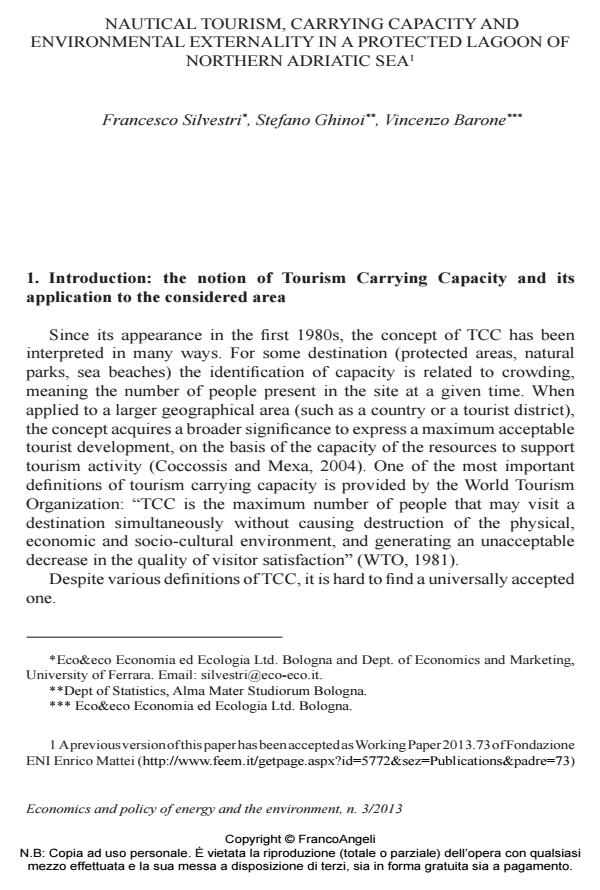Nautical tourism, carrying capac ity and environmental externality in a protected Lagoon of Northern Adriatic Sea
Journal title ECONOMICS AND POLICY OF ENERGY AND THE ENVIRONMENT
Author/s Francesco Silvestri, Stefano Ghinoi, Vincenzo Barone
Publishing Year 2014 Issue 2013/3
Language English Pages 36 P. 145-180 File size 3081 KB
DOI 10.3280/EFE2013-003006
DOI is like a bar code for intellectual property: to have more infomation
click here
Below, you can see the article first page
If you want to buy this article in PDF format, you can do it, following the instructions to buy download credits

FrancoAngeli is member of Publishers International Linking Association, Inc (PILA), a not-for-profit association which run the CrossRef service enabling links to and from online scholarly content.
Tourism and environmental preservation are often conflicting activities, mainly in coastal lagoons, where seaside mass-tourism comes into contact with a very sensitive ecological system. In this paper we deal with a classical problem of both environmental and tourism economics, the internalization of environmental costs of tourism, focusing on the nautical fruition of the Lagoon of Marano and Grado (North-Eastern Italy, Friuli Venezia Giulia Region). Using different instruments, both theoretical (Carrying Capacity framework, Polluter-Payer principle, Coase compensation) and empirical (Log-log regression, Forecasting model, CBA with defensive expenditures and actual market values), we ascertained the result that - given the current nautical berths endowment - a standard Coase equilibrium (unit external cost equal to unit private benefit) does not hold, and a higher number of vessels transiting in the Lagoon is more effective than a tempered fruition for nature conservation. Another interesting result is that the best available solution to internalize environmental externality is a mixed one, combining a command and control rule (a speed-limit prescription) with a Coasian compensation scheme. All the technical theoretical and empirical derivations are reported in Appendix A (Pressure Parameter Calculation), Appendix B (Benefit and Cost Calculation), and Appendix C (Data set and Econometric Tests).
Keywords: Tourism Carrying Capacity, Nature conservation, Externalities, Empirical studies
Jel codes: Q01, Q26, Q57
Francesco Silvestri, Stefano Ghinoi, Vincenzo Barone, Nautical tourism, carrying capac ity and environmental externality in a protected Lagoon of Northern Adriatic Sea in "ECONOMICS AND POLICY OF ENERGY AND THE ENVIRONMENT" 3/2013, pp 145-180, DOI: 10.3280/EFE2013-003006